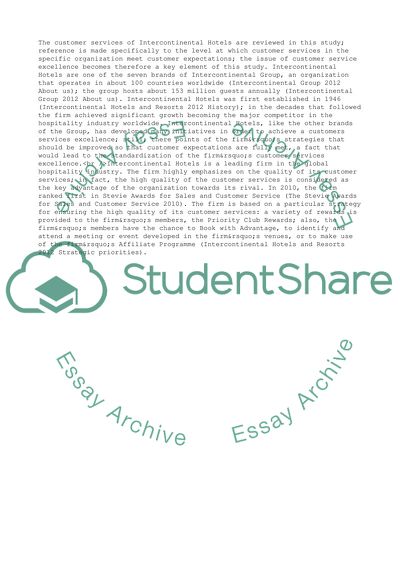Cite this document
(Intercontinental Hotels Customer Service and Customer Expectations Case Study, n.d.)
Intercontinental Hotels Customer Service and Customer Expectations Case Study. https://studentshare.org/business/1770038-an-evaluation-of-how-intercontinental-hotels-customer-service-measures-up-to-customer-expectations
Intercontinental Hotels Customer Service and Customer Expectations Case Study. https://studentshare.org/business/1770038-an-evaluation-of-how-intercontinental-hotels-customer-service-measures-up-to-customer-expectations
(Intercontinental Hotels Customer Service and Customer Expectations Case Study)
Intercontinental Hotels Customer Service and Customer Expectations Case Study. https://studentshare.org/business/1770038-an-evaluation-of-how-intercontinental-hotels-customer-service-measures-up-to-customer-expectations.
Intercontinental Hotels Customer Service and Customer Expectations Case Study. https://studentshare.org/business/1770038-an-evaluation-of-how-intercontinental-hotels-customer-service-measures-up-to-customer-expectations.
“Intercontinental Hotels Customer Service and Customer Expectations Case Study”. https://studentshare.org/business/1770038-an-evaluation-of-how-intercontinental-hotels-customer-service-measures-up-to-customer-expectations.


